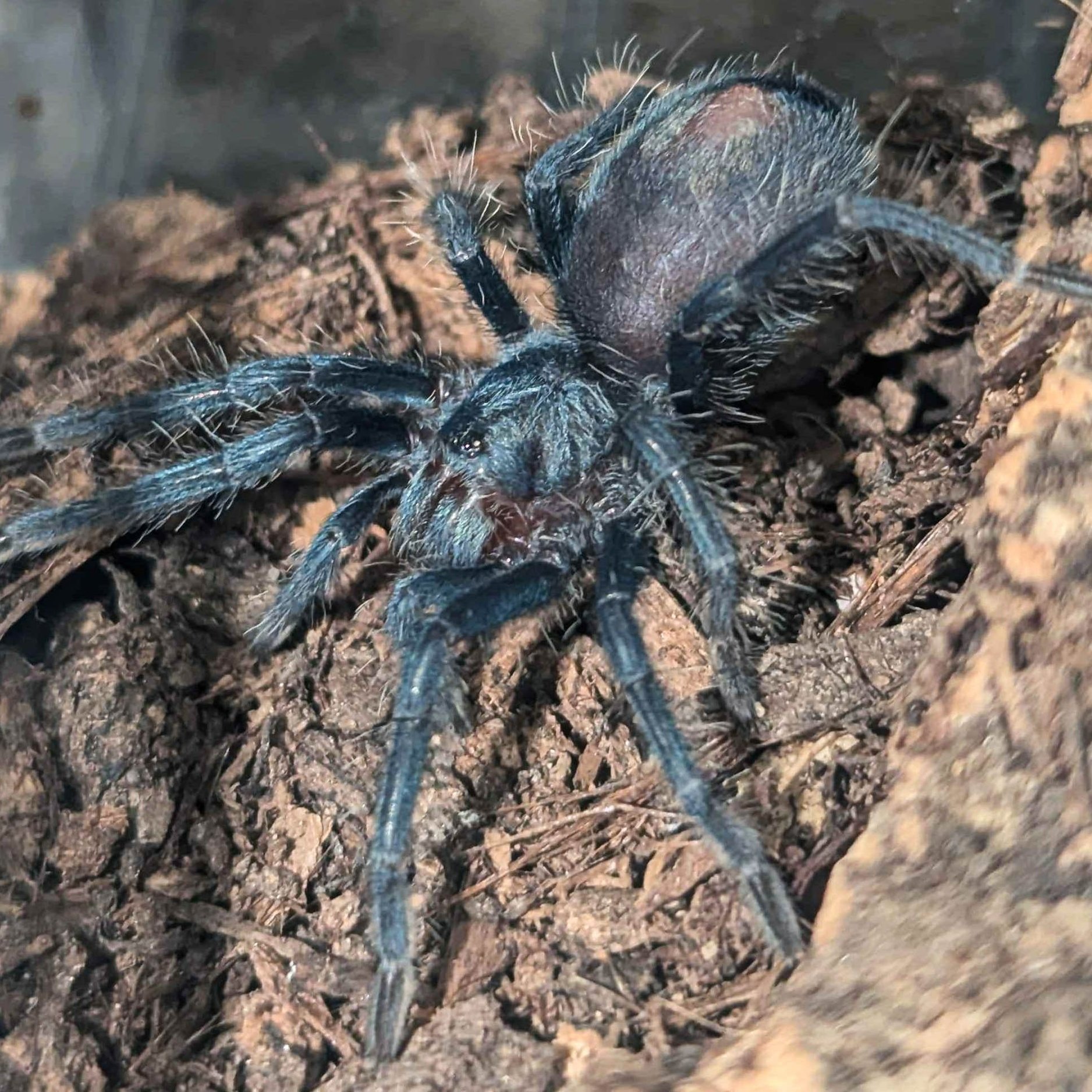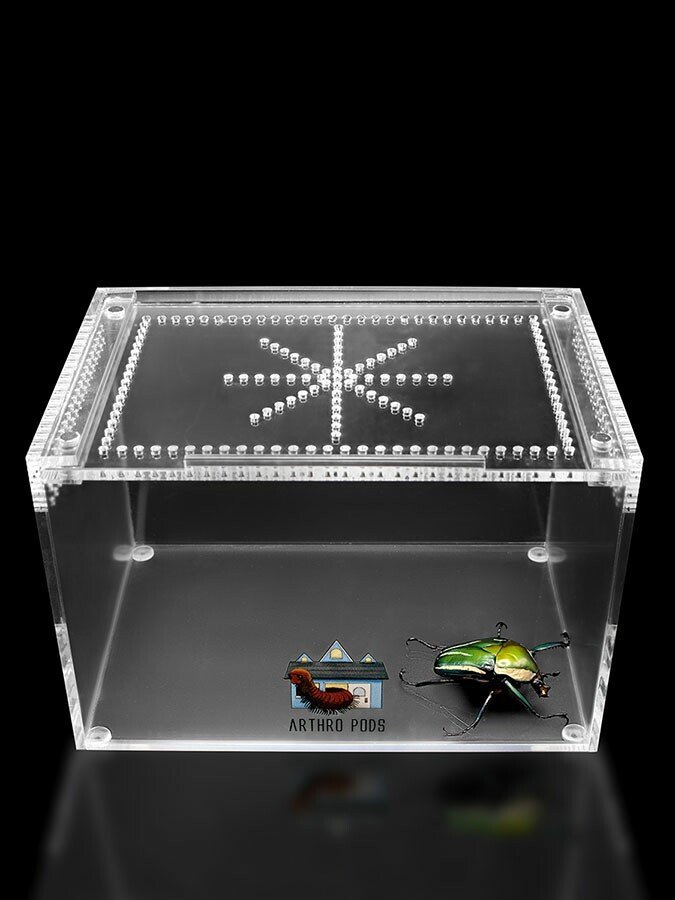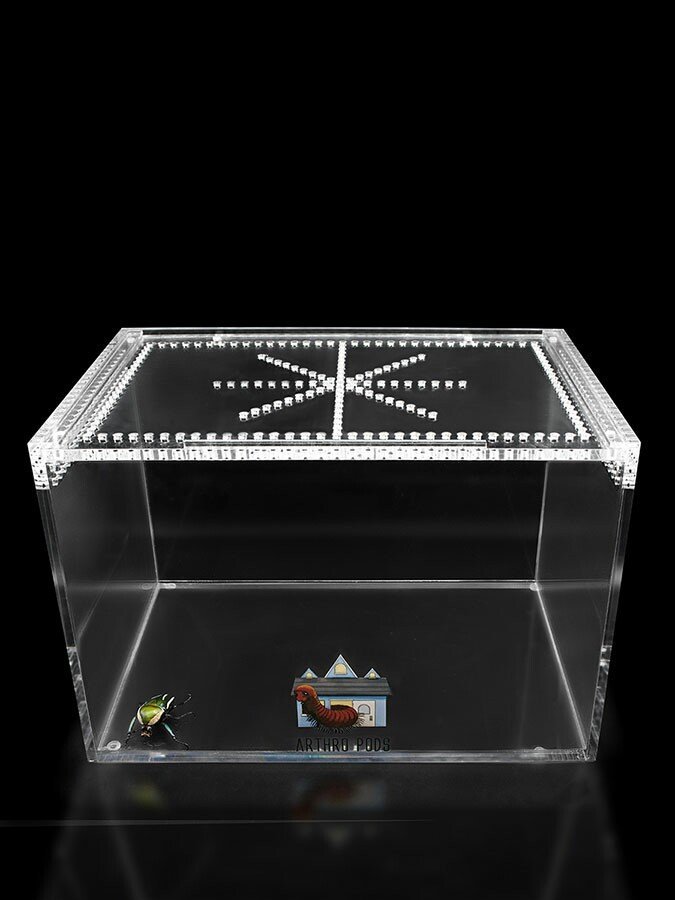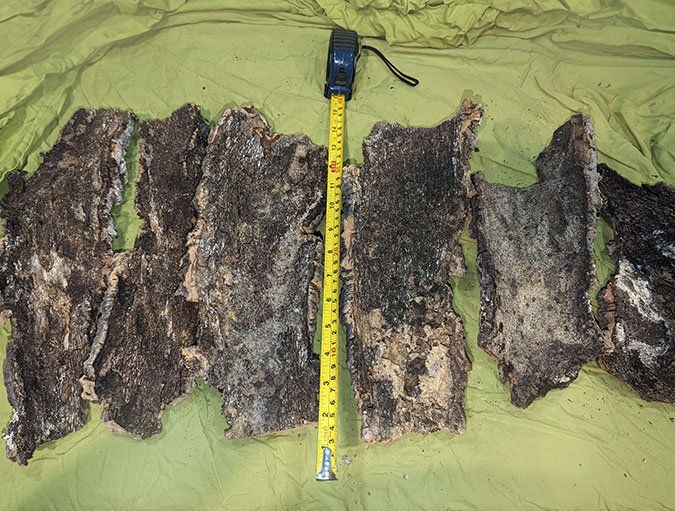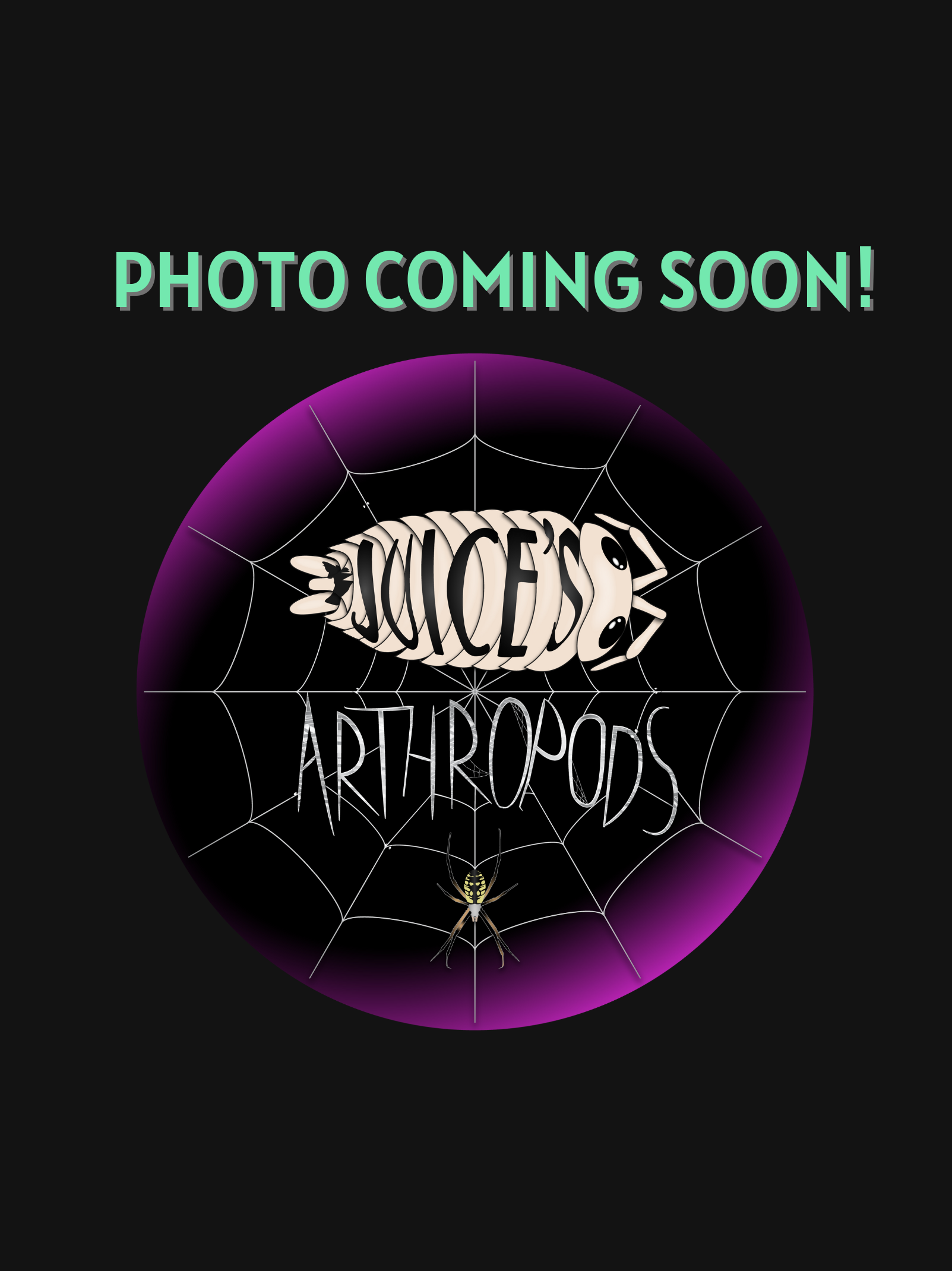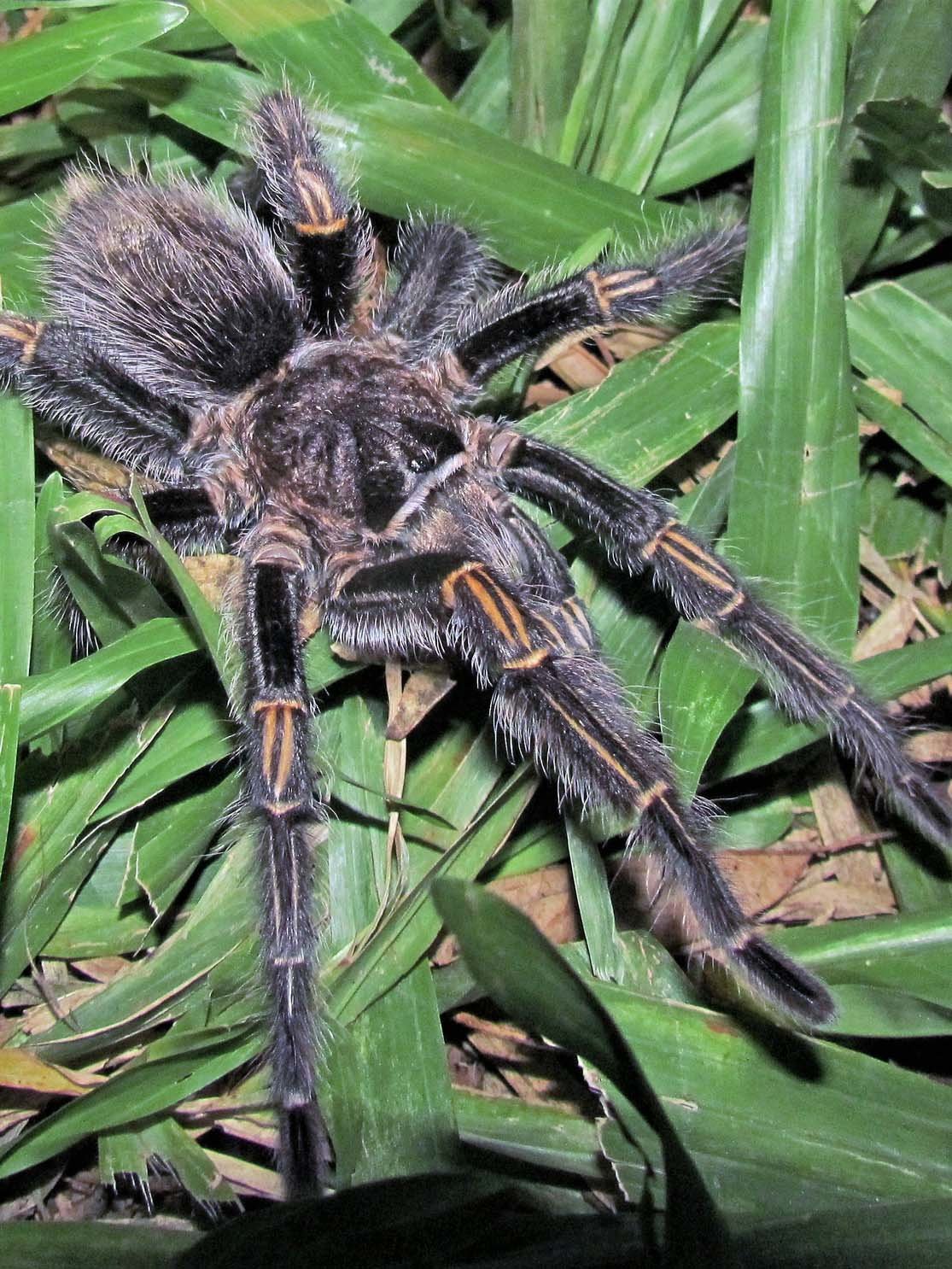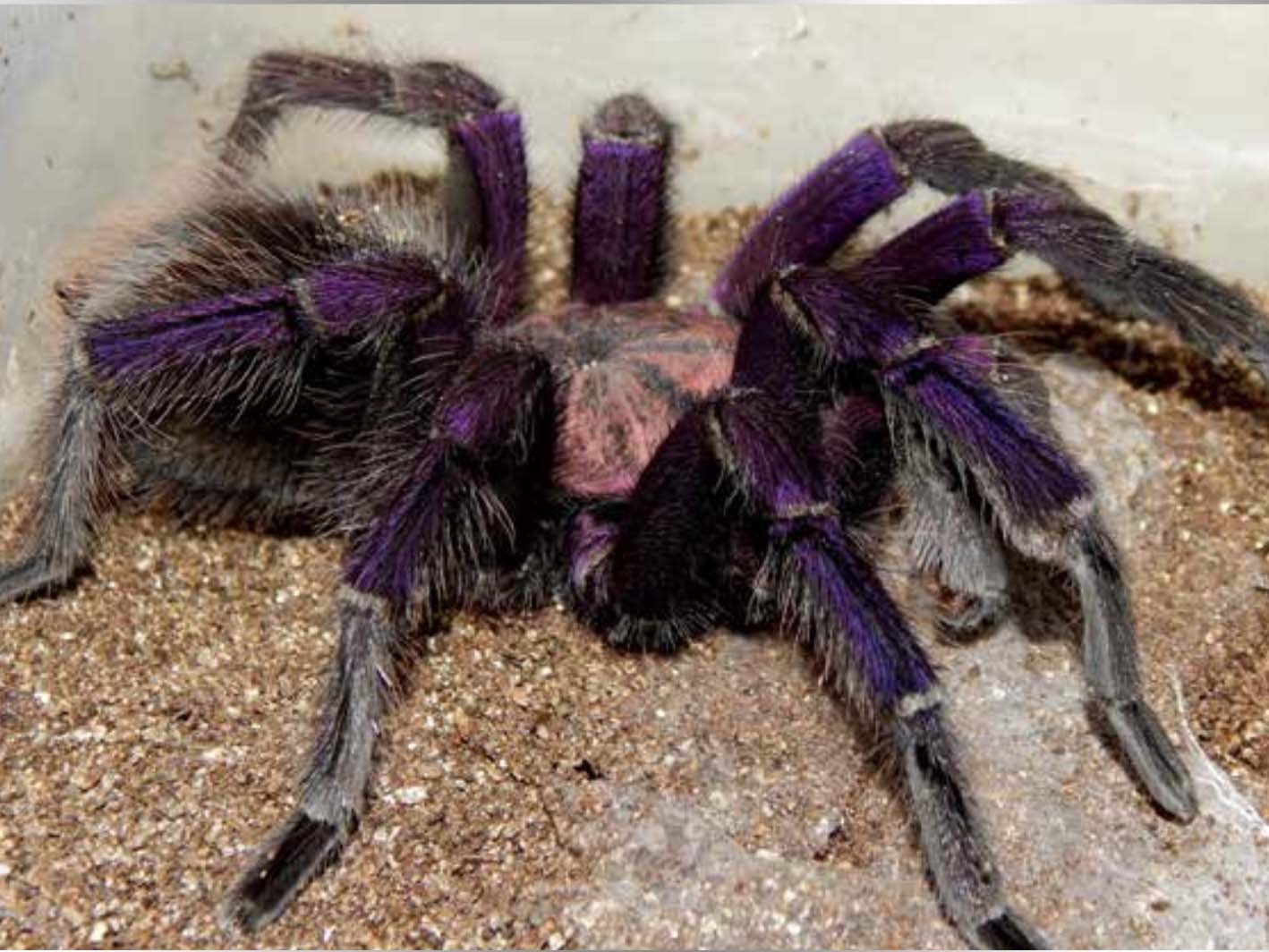Phormictopus sp. "Dominican Purple"
The Phormictopus sp. "Dominican Purple," commonly known as the Dominican Purple Tarantula, is a large and visually stunning species renowned for its iridescent purple hues, which shimmer beautifully under the light as the tarantula matures. With a leg span of up to 7–8 inches, this species is prized among enthusiasts for its commanding size and rapid growth rate. Its captivating coloration and unique presence in collections make it a standout choice for hobbyists seeking a tarantula with both beauty and personality.
The Phormictopus sp. "Dominican Purple," commonly known as the Dominican Purple Tarantula, is a large and visually stunning species renowned for its iridescent purple hues, which shimmer beautifully under the light as the tarantula matures. With a leg span of up to 7–8 inches, this species is prized among enthusiasts for its commanding size and rapid growth rate. Its captivating coloration and unique presence in collections make it a standout choice for hobbyists seeking a tarantula with both beauty and personality.
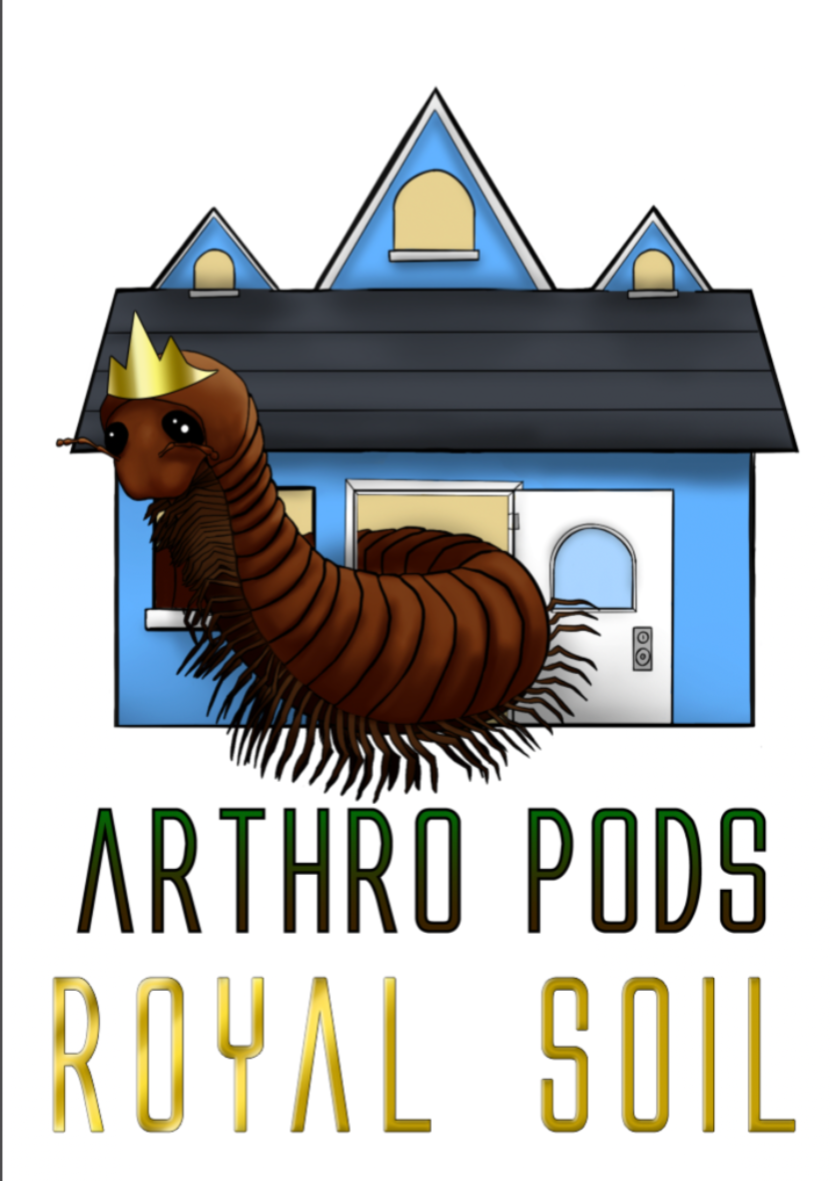
The Phormictopus sp. "Dominican Purple," commonly known as the Dominican Purple Tarantula, is a large and visually stunning species renowned for its iridescent purple hues, which shimmer beautifully under the light as the tarantula matures. With a leg span of up to 7–8 inches, this species is prized among enthusiasts for its commanding size and rapid growth rate. Its captivating coloration and unique presence in collections make it a standout choice for hobbyists seeking a tarantula with both beauty and personality.
What's the ideal diet for a Dominican Purple Tarantula?
All Tarantulas can eat a variety of feeders. Stick to crickets, dubia roaches, silkworms, horned worms occasionally, and a superworm or mealworm as the occasional treat!
How should I keep a Dominican Purple Tarantula?
For this particular creature, you can start with the Terrestrial Terrain small enclosure if under a ¼in -1.2in Spiderling (sling), and when they get to be about 1in the size, you will want to either go to the Terrestrial Terrain Medium, or Terrestrial Terrain Large enclosure. Feed them as slings once a week, twice if their opisthosoma (abdomen) looks small, but if the opisthosoma is wider than their prosoma (pneumothorax) then wait a couple of days to feed. For juveniles or adults, stick to feeding once a week, nothing larger than their opisthosoma. Make sure to keep a water dish at all times full, wider and deeper is preferred.
How long could a Dominican Purple Tarantula live?
Females are believed to live upwards of 15-20+ years in captivity, and even males can live upwards of 4-5 years of age. All estimates are based on multiple sources.


